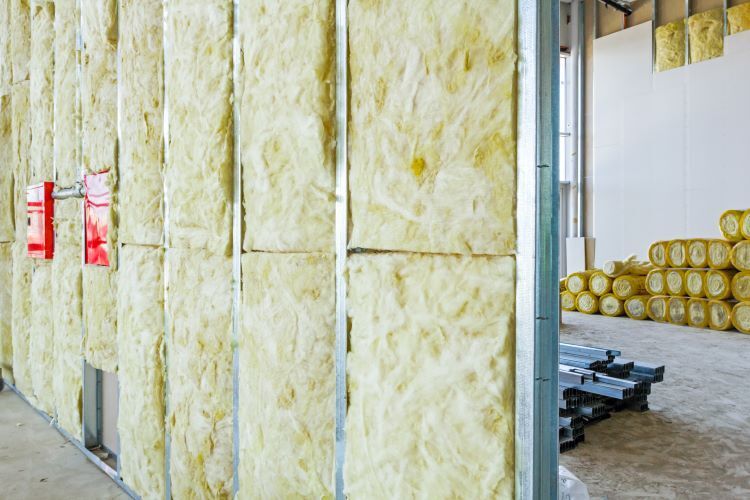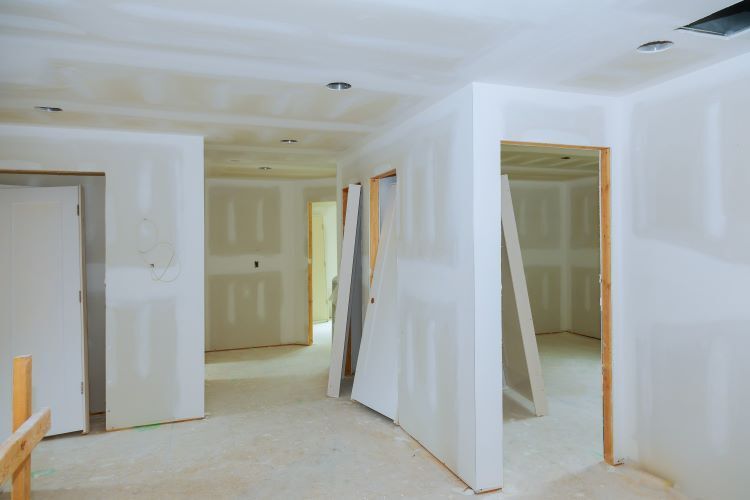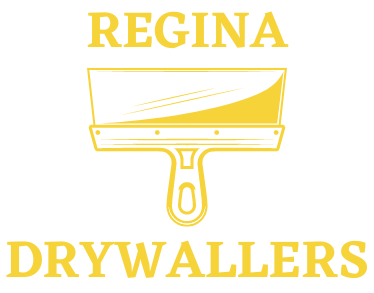How Drywall and Insulation Work Together

When building or renovating a home in Regina, Saskatchewan, ensuring proper insulation and drywall installation is crucial for energy efficiency, comfort, and overall structural integrity. While drywall is commonly known for creating smooth, finished walls, it also plays a key role in enhancing insulation. The combination of drywall and insulation can drastically affect your home's energy efficiency, soundproofing, and even indoor air quality.
At Regina Drywallers, we know how important it is for homeowners to understand the connection between drywall and insulation, so let's explore how these two components work together to benefit your home.
The Role of Insulation in Your Home
Insulation is essential for regulating temperature inside your home, keeping it warm in the winter and cool in the summer. It works by creating a barrier that prevents heat transfer between the inside and outside of your house. The right insulation can significantly reduce your energy bills by minimizing the need for heating and cooling systems to work overtime.
Types of insulation commonly used in homes include:
- Fiberglass Batt Insulation: One of the most common types, fiberglass batts fit snugly between wall studs to provide thermal resistance.
- Spray Foam Insulation: This type expands after application to fill gaps and cracks, offering excellent insulation and an air barrier.
- Rigid Foam Insulation: These foam boards provide high insulating value for limited wall space and are often used in exterior walls or basements.
- Blown-In Insulation: Typically made of fiberglass or cellulose, blown-in insulation is installed using specialized equipment to fill wall cavities and attics.
While insulation alone can help maintain a comfortable indoor environment, drywall plays an essential role in completing the system.
The Purpose of Drywall in Insulation Systems
Drywall isn’t just for aesthetics—it serves multiple functional purposes in your home’s insulation system. Here's how drywall complements insulation:
- Acts as an Extra Barrier: Once insulation is installed within your walls, drywall provides an additional barrier that helps improve the overall energy efficiency of your home. Drywall traps the air inside, enhancing insulation performance and keeping the conditioned air inside your home from escaping.
- Fire Resistance: Drywall is naturally fire-resistant, especially if you use fire-rated drywall (also known as Type X drywall). This adds an extra layer of safety, slowing down the spread of fire and giving occupants more time to evacuate. Proper insulation combined with fire-resistant drywall increases the fire safety of your home.
- Soundproofing: Insulation is often used to reduce sound transmission between rooms or from the outside. When paired with drywall, the combination helps create a quieter living space. Special soundproof drywall products are available to further reduce noise transfer, making the pairing of drywall and insulation especially effective in home theaters, bedrooms, or home offices.
- Moisture Control: In areas like basements or bathrooms, moisture control is crucial. Insulation that resists moisture, like spray foam or rigid foam, can be paired with moisture-resistant drywall (also called green board or cement board) to prevent mold and mildew growth. This combination is essential for maintaining indoor air quality and protecting the structural integrity of your walls.
How to Ensure Drywall and Insulation Work Effectively Together
To make sure drywall and insulation perform optimally, it’s essential to follow certain best practices during installation:
- Choose the Right Insulation for Your Climate: Regina’s cold winters make proper insulation vital. Fiberglass batts and spray foam are popular choices, but it's important to select insulation with the appropriate R-value for your walls. The higher the R-value, the better the material resists heat flow.
- Install Vapor Barriers: In colder climates, moisture can condense within your walls if the insulation and drywall aren’t properly sealed. Installing a vapor barrier, typically a plastic sheeting placed between the insulation and drywall, helps prevent condensation from building up and causing mold or rot.
- Proper Drywall Installation: Even the best insulation won’t perform effectively if the drywall isn’t installed correctly. Properly fastening the drywall to the studs without gaps or cracks is critical for sealing in the insulation and ensuring maximum thermal resistance.
- Consider Soundproofing Drywall: If noise reduction is a priority, look for drywall products designed specifically for soundproofing. These often have extra layers or mass that help block sound transmission, working alongside insulation to create a quieter home environment.
- Don’t Forget About Ceilings: Insulating and properly finishing ceilings with drywall is just as important as doing so for walls. Ceiling drywall helps contain heat in the living spaces below and prevents noise from traveling between floors.
Benefits of Proper Insulation and Drywall Working Together
When drywall and insulation work in harmony, the benefits to homeowners are substantial:
- Energy Efficiency: With well-installed insulation and drywall, your home becomes more energy-efficient. This translates to lower heating and cooling costs and a more comfortable indoor environment.
- Comfort: Properly insulated walls and ceilings prevent drafts and maintain a consistent temperature, making your home comfortable year-round.
- Sound Reduction: Insulation combined with drywall reduces noise from both inside and outside your home, creating a peaceful and quiet living space.
- Moisture Resistance: In moisture-prone areas like basements and bathrooms, the right combination of insulation and drywall prevents mold growth and maintains a healthy indoor environment.
- Increased Home Value: Energy efficiency, comfort, and safety improvements through proper insulation and drywall installation can increase the value of your home, making it a more attractive investment for potential buyers.
Conclusion
In any home renovation or new construction project in Regina, understanding how drywall and insulation work together is key to achieving optimal performance. Whether you're looking to improve energy efficiency, enhance soundproofing, or increase fire resistance, the right combination of insulation and drywall will provide long-term benefits for your home.
At Regina Drywallers, we’re here to help homeowners make the best decisions for their drywall and insulation needs. If you’re planning a project or need professional advice, don’t hesitate to contact us. Let’s ensure your home stays comfortable, energy-efficient, and protected for years to come.
Contact Regina Drywallers today to learn more about how we can assist with your drywall and insulation projects!
You Might Also Enjoy:



Contact Us!
